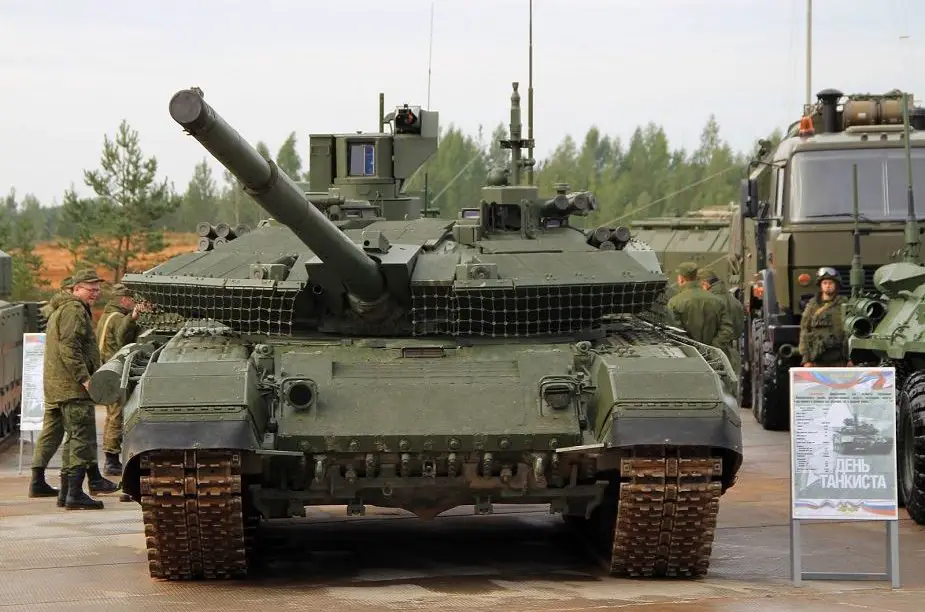Numerous Soviet tanks posed the main threat to NATO in the Cold War. After the Soviet collapse, Russia decommissioned most of them and sent to warehouses. The tank fleet radically reduced, the Independent Military Review writes.

T90 M battle tank (Picture source: Army Recognition)
The number of Soviet tanks was on a par with NATO and China taken together. It is claimed that such huge production doomed the country. However, there were other problems as well. In particular, there was a big number of various tanks (T-64, T-72, T-80 and various modifications). They were built by a single concept (125mm gun, loading mechanism, low profile, antitank missile fire from the gun), but with various engines and equipment.
Right after the Soviet collapse, T-64 of all modifications (produced in Kharkov) were scrapped, as well as most tanks of the first and second generations (T-54, T-55, T-62) and T-72, T-80 of early modifications. However, T-90 appeared as a synthesis of the most successful T-72B and T-80U.
In the first Chechen war, the Russian armed forces lost over 300 T-62, T-72, and T-80. Some of them could be restored. Irreplaceable losses comprised at least a hundred tanks. Some of them were handed over to the Chechen opposition in the autumn of 1994 and were destroyed during the first assault on Grozny in November. In the second Chechen war, all tanks had dynamic armor and were protected by infantry. The losses decreased several times. The Russian army lost at least two T-72 in the first half of the 1990s in Tajikistan. In the five-day war against Georgia in August 2008, Russia lost two T-72 and one T-62 but seized 34-43 Georgian T-72. Eighteen of them were exploded on site. Twelve Georgian T-72 were destroyed in combat.
Traditionally, a three-company tank battalion in the Soviet army had 31 tanks. A motorized infantry division comprised six tank battalions (186 tanks). A tank division had ten battalions (310 tanks). However, few divisions were armed in full. The 2008-2009 reform decreased tank battalions to four companies and a motorized rifle brigade retained only one tank battalion. Tank brigades continued to have three companies (plus commander’s tank). Divisions have been revived of late and are developing to have the Soviet number of tanks.
All T-54/55/62/64 and most T-80 were scrapped or dumped. T-72 tanks are gradually upgraded to T-72B3 option. The production of the T-90A tank was stopped earlier than planned to develop the fourth-generation T-14 tank on tracked uniform Armata platform. However, the production resumed of T-90M upgrade. Units in the North and the Far East began to receive stored T-80BV (upgraded to T-80BVM) in 2018 to replace T-72.
The Kantemirovskaya 4th tank division of the Western Military District deployed in Naro-Fominsk in Moscow region operates 188 T-80U and 41 T-72B3. There are no more T-80U in fighting forces. The 7th tank brigade of the Central Military District in Chebarkul in Chelyabinsk region was developed into the 90th tank division. It has at least 120 T-72B which are to be replaced by T-90. There are two tank brigades: the 5th in Ulan-Ude (Eastern Military District) and the 6th in Dzerzhinsk in Nizhny Novgorod region (Western district). Each has 94 T-72B/B3. Thus, the Russian army currently has four tank formations armed with a total of 500-600 tanks.
© Copyright 2020 TASS / Army Recognition Group SPRL. All rights reserved. This material may not be published, broadcast, rewritten or redistributed.














